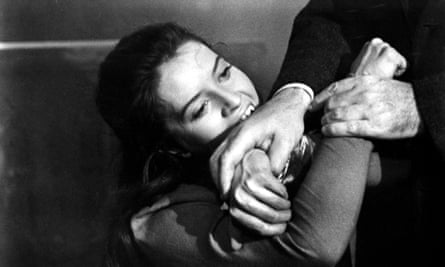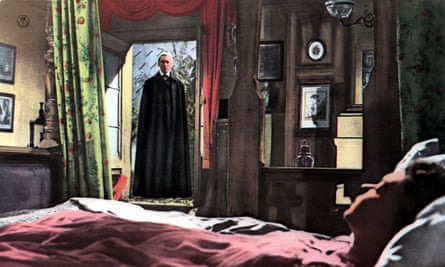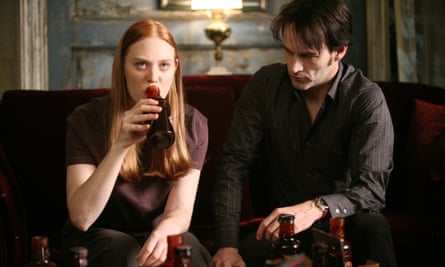Vampire Feeds on the State Cops Blood
Drinking blood isn't what Hollywood makes it out to be, according to real-life vampires.
First of all, there's no biting – that's neither safe nor sanitary – and with too many vital arteries, the neck isn't the favored spot. Transactions aren't carnages leaving the victim lifeless behind in a dark alley, and nor do vampires sleep in coffins or burn in daylight. They're generally cool with garlic. Most of them don't even have fangs.
Instead, modern vampires get their sustenance from inch-long incisions made by a sterilized scalpel on a fleshy part of the body that doesn't scar. Though the vampire may suck it up directly from the source, medically trained personnel usually perform the procedure. There's paperwork too: "donors" don't just have to consent, but also provide health certificates proving the absence of blood-borne diseases. Still, feeding is a sensual and sacred ritual.
The people who claim to be vampires are in the thousands worldwide, with demographics transcending borders, class, race and gender. And increasingly, researchers study them.
"We're people you pass on the street and likely socialize with on a daily basis," says Merticus, the 37-year-old founding member of Atlanta's Vampire Alliance. "We often keep this aspect of our life secret for fear we'll be misunderstood and to safeguard against reprisals from what society deems taboo."
Merticus has identified as a real vampire since 1997, and speaks eloquently and passionately about what vampirism is and what it is not. ("Not a cult, a religion, a dangerous practice, a paraphilia, an offshoot of the BDSM community, a community of disillusioned teenagers and definitely not what's depicted in fictional books, movies or television.")
An antique dealer by profession, married with two dogs, he's one of exceptionally few vampires to be open about his identity ("I hide in plain sight," he explains). For almost a decade, he has personally worked with academics, social scientists, psychologists, lawyers, law enforcement agencies and others on how to best approach, research and understand the vampire subculture.
An Atlanta native, he is known as Merticus both legally and personally – even on his Starbucks card. And while he mostly dresses head-to-toe in black, he doesn't don colored lenses or fang prosthetics. In fact, he is keen to say he isn't into it because vampirism is "cool". Real vampires don't care much for pop culture buzz, and most don't look the stereotype (only some 35% of real vampires are into goth, he claims). Some even sneer at the "lifestylers" (also known as "fashion vampires" and "posers").

Apart from the societal taboos attached to the practice, consuming human blood is generally not advisable: not only can it carry a range of diseases – including Hepatitis, HIV and parasites – but also hazardous amounts of iron. Indeed, modern vampires often insist that their cravings are not voluntary – life would have been easier without them – but something they're born with. Yet, it isn't necessarily sexual: though they can and do overlap, real vampirism should not be confused with blood fetishism.
Insiders refer to the realization of one's vampiric nature as an awakening. It isn't like the dramatic process often portrayed in movies, and one isn't be "turned" through vampires bites. For most vampires, it's a gradual and frightening process, normally manifesting itself in puberty or possibly following trauma. Through trial and error, vampires learn what curbs their hunger.
No one knows what causes haematomania, the craving to drink blood. Those who experience it describe it as an intense thirst-like sensation, an addiction with withdrawal-like symptoms. Animal blood or rare steaks may act as substitutes, but for most vampires nothing beats fresh blood. Frequency and amount vary but for many a few teaspoons once a week is enough. This, naturally, is supplemented with a normal diet: after all, real vampires are humans with human needs.
"Most people are able to maintain healthy energy levels through diet, exercise, social interactions and the occasional cappuccino," says Mertucus. "We've had to develop alternative means to sate our energy needs."
Not all drink blood, either. The community generally acknowledges two types of vampires: the blood vampires ("sanguinarians") and the psychic or energy vampires who drain of "life-force" (also known as prana or chi) rather than blood from others.
"We do not identify with fictional characters, supernatural powers, or immortality, nor do we have any difficulty distinguishing between fantasy and reality," Merticus says, adding that if anything, pop culture is catching up to them.
Real vampires, he says, have existed as an organized community for nearly 30 years, and in solitary for far longer. As there is no "test" for vampirism, everyone is welcome and it's a remarkably diverse crowd, ranging from doctors, lawyers, soldiers, scientists, soldiers, artists, teachers and parents of all age, gender, ethnicity and religion. Some chose to align with like-minded through courts and houses, though the majority, he says, do not.
If there's one thing real vampires seem to have in common, it is their reluctance to tell the world about who, and what, they are.

Vampirism is perhaps an unfortunate term, admits John Edgar Browning, a researcher who has studied real vampire communities in New Orleans and Buffalo for nearly a decade.
"The members of this community suffer from the constant conflation of their identity by the outside world with the mythological and filmic vampire," Brownings explains. "As a result, outsiders generally think of them as being out of their minds."
According to Browning, real vampires have carved out their identity using very little of the pop-cultural representation. And while the mainstream may love vampires on screen, those who identify as such live in deep fear of hate crime and discrimination.
"Had they called themselves something else entirely, their reception may have developed quite differently. Regardless, any mention of their special health issues is almost always treated with suspicion by medical professionals; the inclusion of the word 'vampire' only intensifies it."
Unfortunately, the fictitious misconceptions have translated into real-life stigmas. A study published by DJ Williams of Idaho State University raised alarm that individuals from the community rarely reveal their practices to clinicians, fearing they be labeled psychopathological in some way, or even wicked. While vampirism isn't illegal, or not included in Diagnostic and Statistical Manual of Mental Disorders (DSM), self-identified vampires worry they may be deemed not competent to perform in typical social roles, including careers and parenting, or even be hospitalized.
To preserve the intensity of the fear and emotion reported by participants, Williams chose to present their questionaire responses in poetic structures.
"Would I be comfortable
Disclosing my vampire identity?
No, I would never do that!
It would detract
From real issues
For which I was seeking treatment.
I have no desire to be classified
As delusional,
Immature,
Or a threat to public safety.
Social workers, psychologists, and counselors
Should listen
And be open.
They need to know more
About spiritual things.
And not immediately jump
To treating a disorder.
For us, vampirism is normal."
While Merticus does not deny the inherently predatory nature of vampirism, he insists that an overwhelming majority adhere to ethical and safe feeding practices, are of sound mind and judgment and productively contribute to society.

"We are often among the more intelligent, influential, and creative of the general population," Merticus says. "Granted, we may be more 'alluringly interesting' or 'dimensionally complex' than your typical cubicle coworker or next door neighbor; but we're trying to get by in this life just like everyone else!"
Those who have studied the community agree. According to both Browning and Williams, vampires seem to care deeply about the health and wellbeing of those they feed from, representing them as responsible, conscientious and mentally sane individuals (with their own codes of ethics ostracizing "rogues" feeding irresponsibly). The website of Atlanta's Vampire Alliance even features a chapter on animal welfare, advising against unnecessary cruelty if choosing non-human blood.
Browning reports that while New Orleans' community are extremely private, they regularly get together for humanitarian efforts, including feeding the city's homeless. "One generally expects me to divulge stories of horror and revulsion about my experiences with the real vampire community, but the truth is I couldn't have felt safer being around them," he says.
Using the widespread discrimination of BDSM practitioners as a reference point, Williams explains that vampires' fears to come out are far from unwarranted – much like kink (which was only removed from the DSM last year), vampirism highlights how ill-prepared our systems still are to deal with non-conventional lifestyles and deviance.
Also the author of academic papers with titles such as Social Work, BDSM and Vampires and Does Social Work Need a Good Spanking?, Williams urges physicians and mental health professionals to meet vampires, as well as other patients with alternative identities, with tolerance and respect in order to better help them.
"Social justice is at core of this," he explains. "I don't think that real vampires are our next civil rights struggle. But I do think that we are moving into an era where social justice for a much wider variety of diverse identities and communities will be a key societal issue."
Real vampirism, admittedly, is still a nascent field of research. While waiting for academia to catch up, advocates from inside the community commissioned their own study (Merticus was part of orchestrating it). It gathered 950 participants in 40 countries across all continents between 2006 and 2014, and found that real vampires reported a far greater than normal incidence of medical ailments such as asthma, chronic fatigue, fibromyalgia and endocrine system disorders than the general population.
As serious research picks up by social (and hopefully medical) science, Merticus hopes to find not only answers, but also that acknowledgment may lead to increased acceptance for his kind.
In real life, coming out or not – much like True Blood's civil rights allegory– is a divisive question: is the pop-cultural fascination with vampires an opportunity to build alliances and enlighten the world? Or should vampires retreat underground to avoid judgment?
For now, real vampires feel safer in the shadows.
"I'm more concerned about family life, the economy, finding a steady donor, and hoping the media doesn't attribute the latest murder to non-existent 'vampire cults' than I am worried about seeking social justice and acceptance for my identity," Merticus says.
"All we ask for is an open mind, tolerance, and the right to privately live our lives."
garfieldbuttephon.blogspot.com
Source: https://www.theguardian.com/society/2015/aug/15/real-life-vampires-interview
0 Response to "Vampire Feeds on the State Cops Blood"
Post a Comment